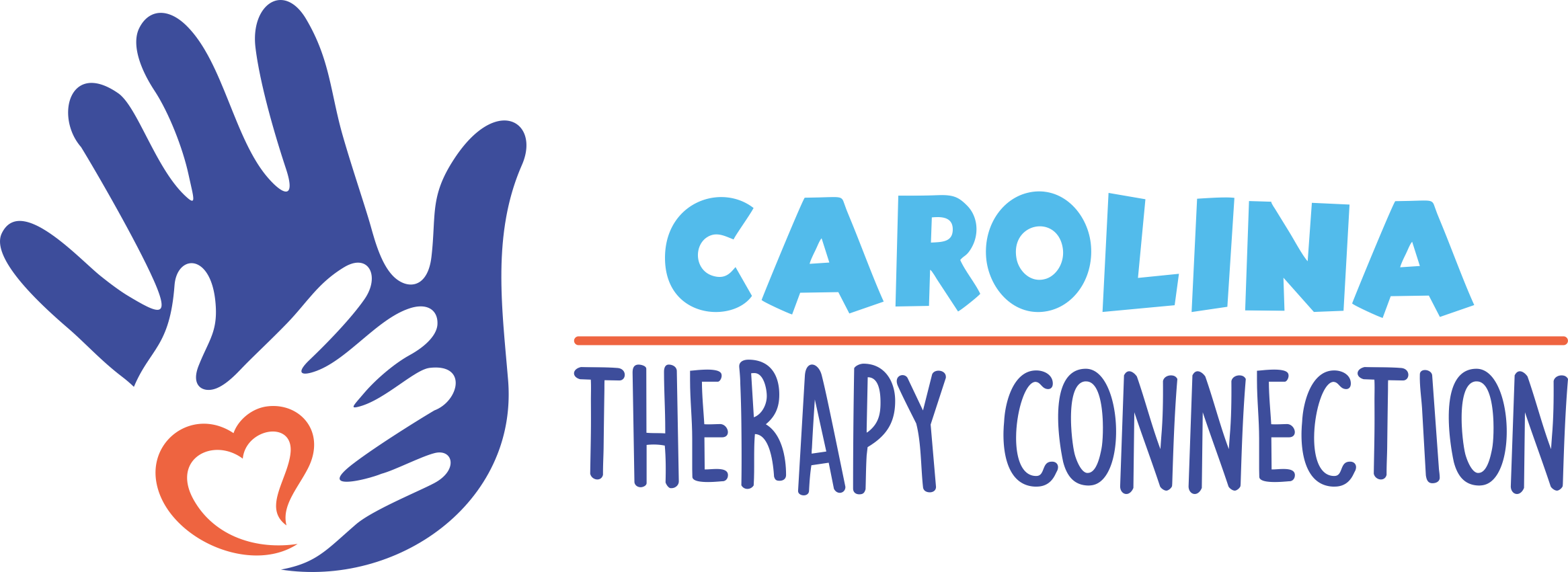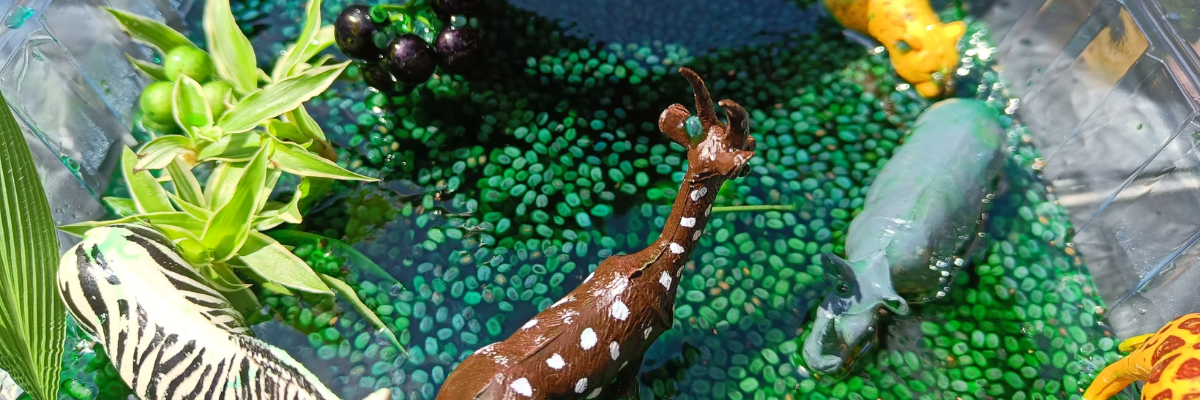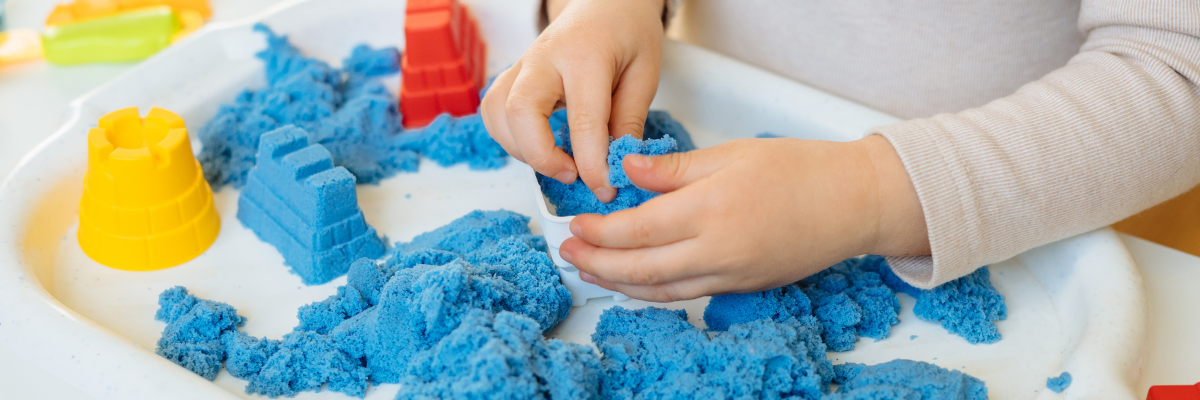What is a Sensory Bin?
A sensory bin contains various mediums to provide sensory input via tactile, auditory, and visual stimuli. As an Occupational Therapy Assistant, I treat kiddos who are defensive to sensory input. This can affect feeding, tolerating clothing, tolerating self-care like hair brushing or tooth brushing, and the various textures or sensory inputs we encounter daily. A sensory bin can provide the necessary sensory input to improve attention to tasks, decrease tactile defensiveness, improve tolerance for self-care, improve emotional regulation skills, improve communication skills, and assist with the development of social skills.
Choosing the Right Container:
A plastic clear container is ideal because you can see what’s inside and is easy to clean when you are ready to switch out your mediums. You can also use baskets, trays, bowls, etc.
Filling Options:
- Base materials: Rice, sand, kinetic sand, dried beans, shredded paper. You can also use edible items such as crushed crackers/cookies, noodles, quinoa, etc, for kiddos who put things in their mouths regularly.
- Textures: Soft fabric, smooth stones, fluffy cotton balls, feathers, ribbons, or squishy foam.
- Colors: Use colored rice or dyed pasta for visual stimulation. Themed Sensory Boxes:
- Themes like nature, ocean, outer space, Easter/Spring, or seasons can give great ideas when unsure what to put together.
- For example, an ocean theme could include crushed crackers for sand, blue jello for water, and sea animal toys.
- Another example is a nature theme, including various leaves, sticks, rocks/stones, animal or insect toys, dirt or crushed Oreos, and gummy worms!
- Just one more example: Spring could include wildflowers (real or pretend), toy birds/chicks, chickpeas, cotton balls, feathers, etc.
Incorporating Scents:
- Explore scented elements to enhance the sensory experience.
- Consider items like scented playdough, essential oils, food items, or dried herbs.
Incorporating Tastes:
- If you have a kiddo who is working on trialing new foods/food textures, you can make your sensory bin ALL FOOD items! This allows your child to work on expanding their food repertoire while decreasing the fear associated with trying new foods at mealtimes.
Sensory Box Safety Tips:
- Consider age-appropriate items and avoid small parts that could be a choking hazard.
- Remember, when using food/wet items, to change them out regularly to prevent mold/mildew buildup.
- AVOID ORBEEZ, please! They are not safe and could cause damage to the internal organs if consumed!
Have Your Child Assist:
- Having your child assist with making the sensory box can be a great way to build communication skills, improve the development of social skills, and decrease fear regarding textures.
- Oftentimes, children who are defensive to textures can become very upset or fearful when presented with a new medium. However, if the child can see where the medium comes from, it could decrease the fear significantly! This is also a good opportunity to have your child touch different textures!
How can Carolina Therapy Connection help?
- Ask your child’s therapist about sensory bin ideas used here in the clinic.
- Pinterest has great ideas as well!
By: Shelby Godwin, COTA


